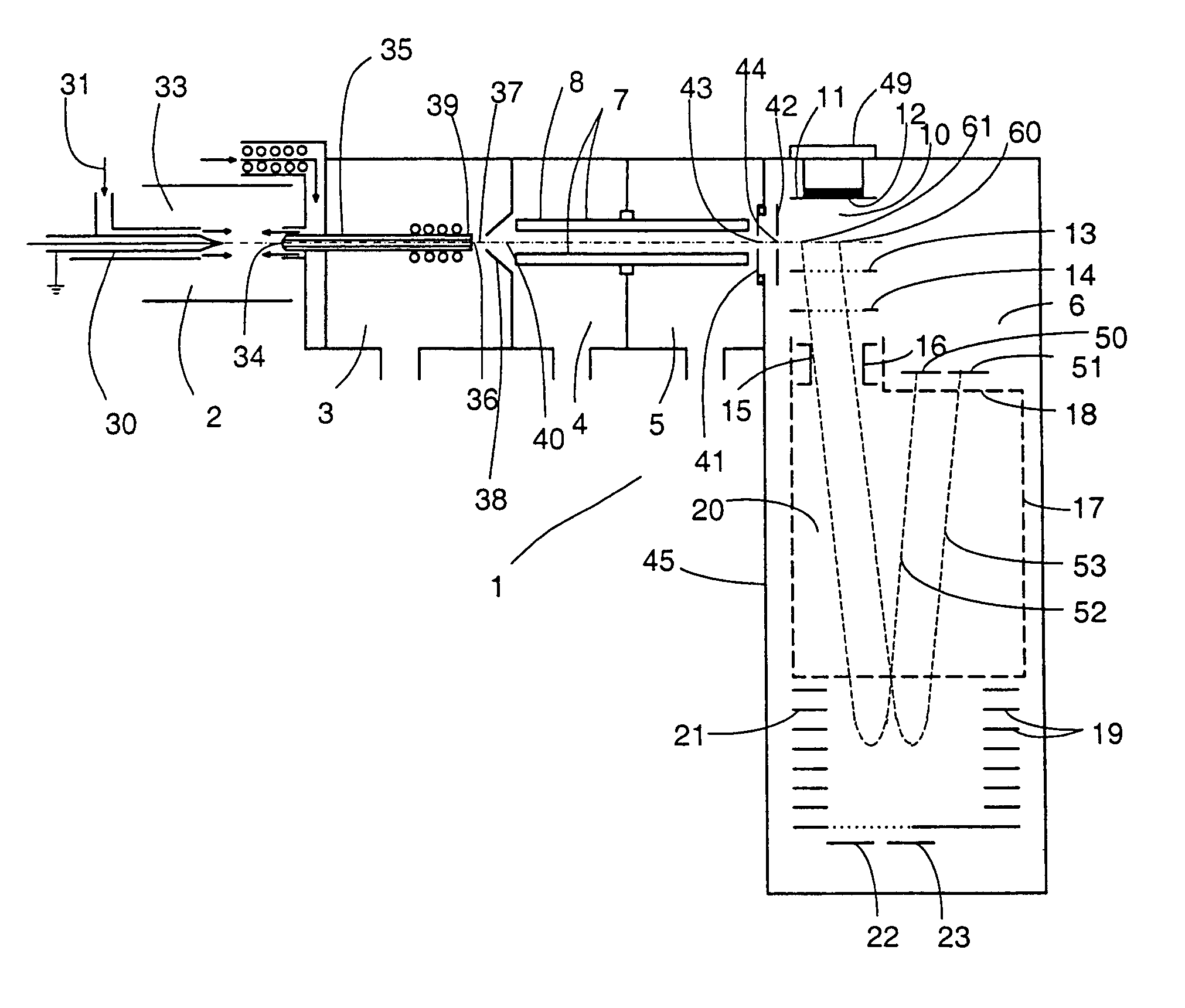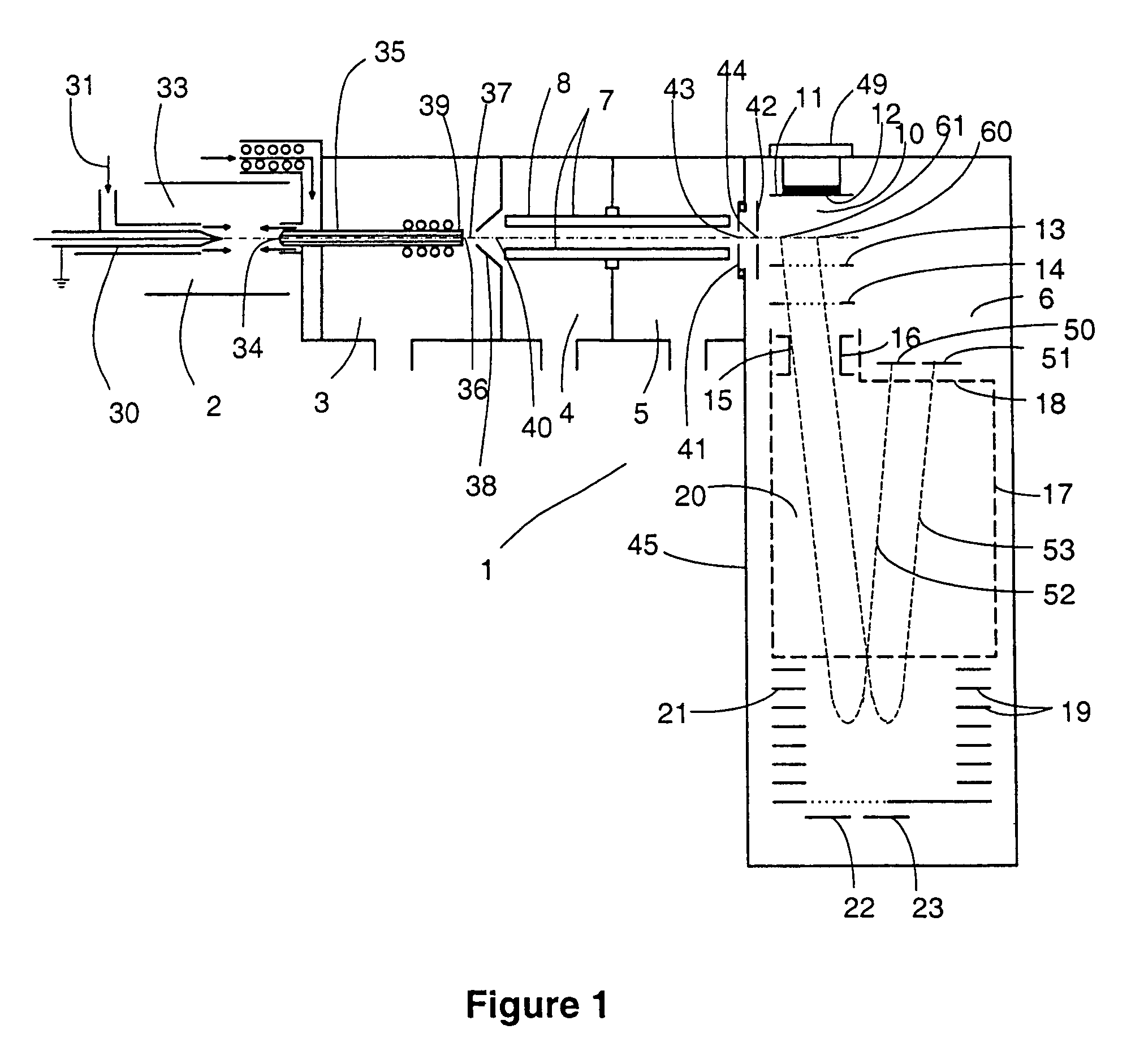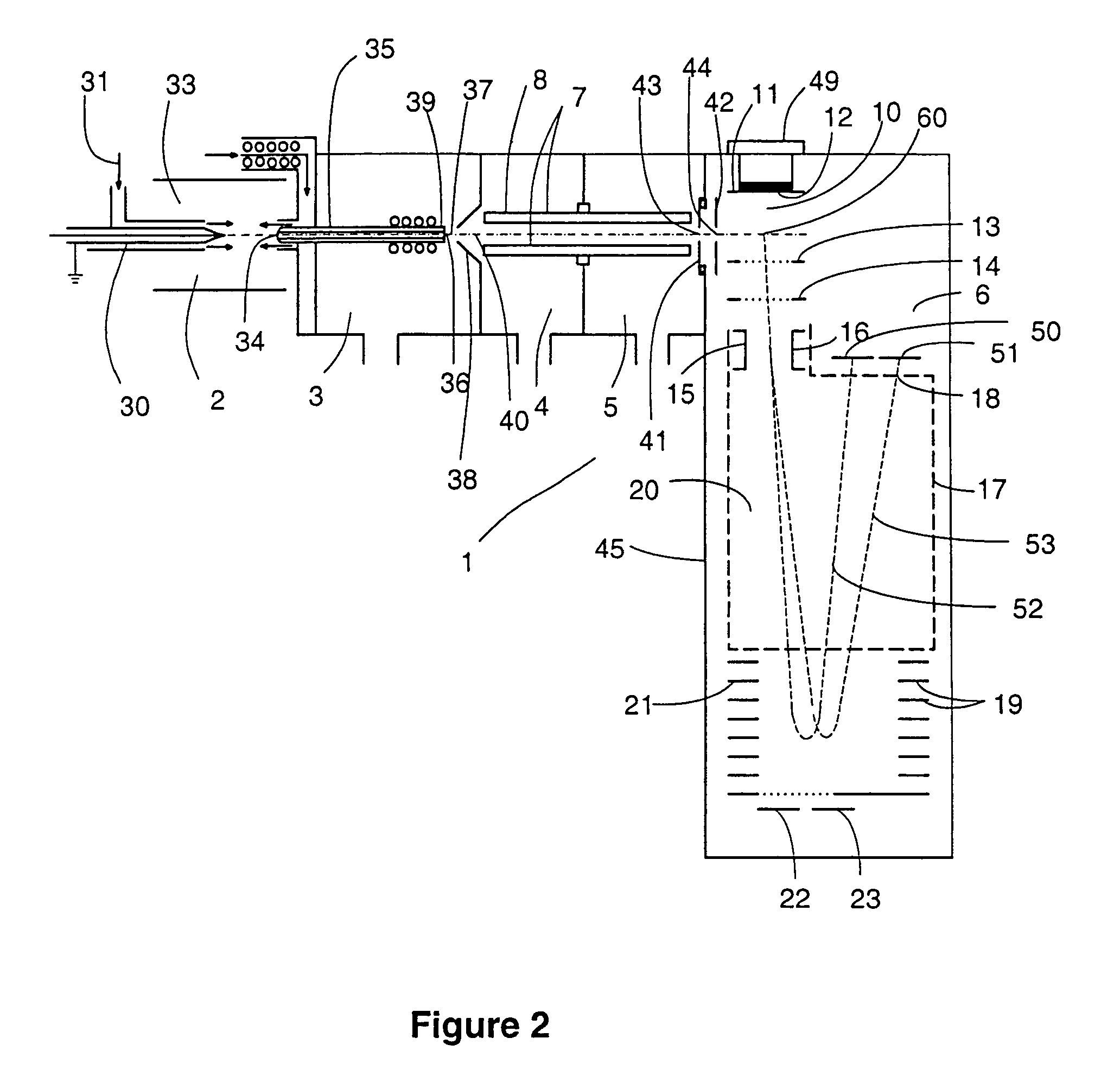Multiple detection systems
a detection system and multi-stage technology, applied in the field of particle detection systems, can solve the problems of reducing the m/z resolving power, affecting the detection efficiency of particle separators, and often insufficient gain to produce measurable output signals from single ions, so as to reduce cost and complexity, improve signal-to-noise, and increase intensities
- Summary
- Abstract
- Description
- Claims
- Application Information
AI Technical Summary
Benefits of technology
Problems solved by technology
Method used
Image
Examples
Embodiment Construction
[0052]Time-of-Flight (TOF) mass analyzers that incorporate a linear or an orthogonal pulsing region as a means for pulsing ion bunches into the ToF tube are well known to those skilled in the art. Orthogonal pulsing Time-of-flight (O-TOF) mass analyzers are typically configured with the ion source located external to the TOF pulsing region. The primary beam of ions exiting an ion source is directed into the pulsing region of the TOF with a trajectory oriented substantially orthogonal to the axis of the Time-of-flight tube drift region. Several types of ion sources can be interfaced with orthogonal pulsing Time-of-flight mass analyzers. These include but are not limited to Electron Ionization (EI), Chemical ionization (CI), Photon and Multiphoton Ionization, Fast Atom Bombardment (FAB), Laser Desorption (LD), Matrix Assisted Laser Desorption (MALDI), Thermospray (TS), sources as well as Atmospheric Pressure Ion (API) sources including Electrospray (ES), Atmospheric Pressure Chemical ...
PUM
 Login to View More
Login to View More Abstract
Description
Claims
Application Information
 Login to View More
Login to View More - R&D
- Intellectual Property
- Life Sciences
- Materials
- Tech Scout
- Unparalleled Data Quality
- Higher Quality Content
- 60% Fewer Hallucinations
Browse by: Latest US Patents, China's latest patents, Technical Efficacy Thesaurus, Application Domain, Technology Topic, Popular Technical Reports.
© 2025 PatSnap. All rights reserved.Legal|Privacy policy|Modern Slavery Act Transparency Statement|Sitemap|About US| Contact US: help@patsnap.com



